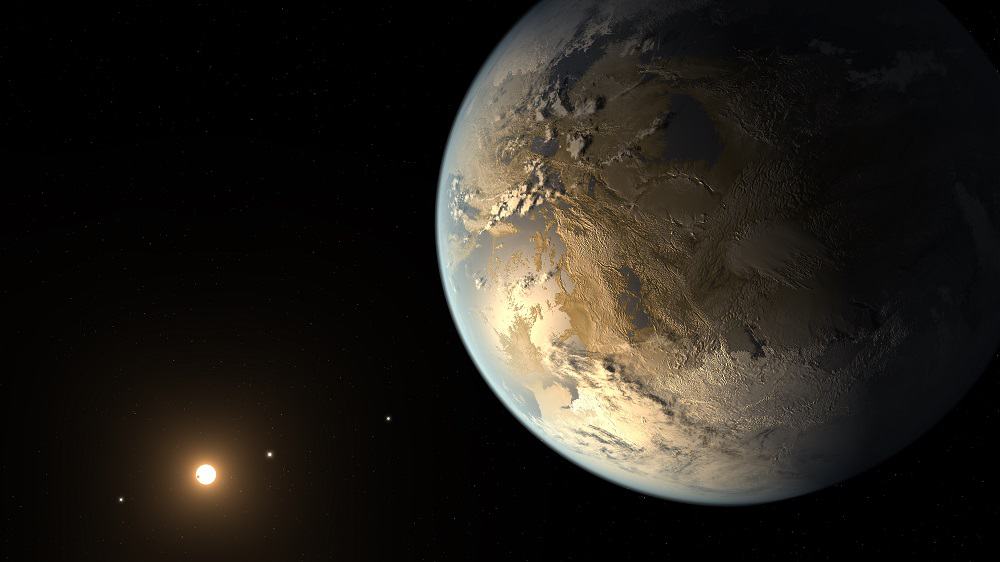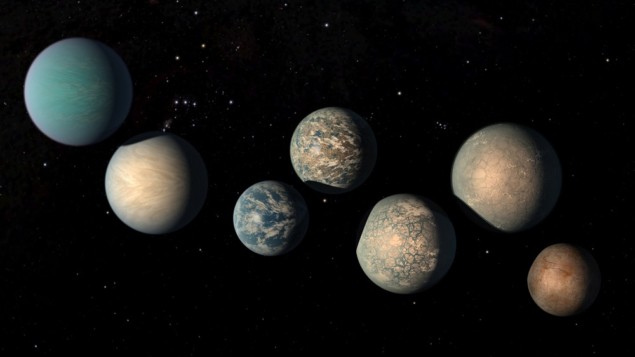NASA must revamp search for life beyond Earth, experts warn
12 Oct 2018
NASA must revamp its astrobiology strategy if it to make progress tackling the question of whether life exists beyond Earth. That is according to a report issued on 10 October by the National Academies of Sciences, Engineering, and Medicine (NASEM), which recommends that the space agency increase collaboration with other scientific disciplines as well as with organizations inside and outside the government.
The report – An Astrobiology Strategy for the Search for Life in the Universe – says that recent advances in astrobiology have been helped by rapid advances in detecting exoplanets in the so-called habitable zone that could support liquid water on their surfaces. Of particular interest are the seven planets of the relatively nearby TRAPPIST-1 system that was detected by TRAPPIST and other telescopes. That research, the report states, “has matured the search for evidence of life beyond the solar system enough to warrant taking the next steps toward the discovery of life on exoplanets”.
NASA should not just go for water and methaneAlan Boss
The 196-page report states that future missions – such as the Transiting Exoplanet Survey Satellite, the Atmospheric Remote-sensing Infrared Exoplanet Large-survey and the Wide Field Infrared Survey Telescope – will advance the characterization of potential “exoEarths”. Yet zeroing in on the detection of life will demand advanced technologies – such as coronagraphs and star shades – that deliver three to four times the resolution of the James Webb Space Telescope, which is due to launch in 2021.
Beyond water
Just as important, the report notes, is the definition of habitability, which currently involves spotting the potential for liquid water. “Water is important, but we need to look at the interplay of multiple parameters, such as temperature and pressure and the way that habitability is the result of those parameters,” says panel chair Barbara Sherwood Lollar from the University of Toronto. That leads to the concept of “dynamic habitability” – what Sherwood Lollar calls “an evolving continuum, not a hit-or-miss issue”. Recent studies of subsurface life on Earth have added strength to that approach, including the idea of “slow life” that draws from chemosynthetic rather than photosynthetic processes.
Indeed, to cover all the possible types of life forms, the report recommends that NASA should support research on “agnostic biosignatures” to detect life different from what we are familiar with. “NASA should not just go for water and methane,” adds Alan Boss of the Carnegie Institution for Science, who is a member of the NASEM panel. Sherwood Lollar adds that future NASA missions should integrate astrobiology requirement “right at the beginning of mission [design]”.READ MORE

The 17-strong NASEM panel also calls on NASA to look beyond its traditional boundaries in terms of academic collaborations and financial support. “The existence of technologies outside of the space industry – for instance biomedical applications and artificial intelligence – that could be used in the search for life provide prime areas for establishing partnerships with the commercial sector,” the report states. Boss puts it more pithily. “We don’t expect one agency or one nation to answer the question of whether we are alone,” he says. “So we encourage NASA to partner on it.”
21/10/2018 from physicsworld.com

Δεν υπάρχουν σχόλια:
Δημοσίευση σχολίου